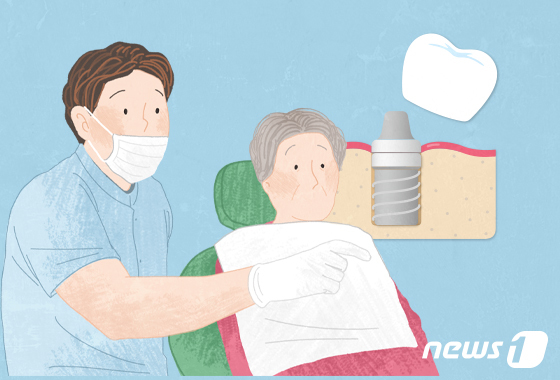
In today’s world, where it is said we can live to be 100 years old, dental health, such as the number and condition of teeth, is a key indicator of overall wellness. Experts emphasize the importance of continuous tooth care, particularly while dental implants have become increasingly popular.
On Tuesday, the dentists explained that a dental implant is a treatment that helps to act as a permanent tooth by implanting titanium. This biocompatible metal will replace the root of the lost permanent tooth and connect a prosthetic tooth to it. Titanium is safe for the body, has high biocompatibility, and bonds well with bone.
Unlike traditional dentures, which you need to wear when eating and take out when sleeping, implants are fixed to the jawbone and withstand strong chewing power. They provide a solid foundation for those who have lost their teeth and restore both their functionality and aesthetics, which is why they’re often called the “second permanent teeth.”
Dr. Soyeon Kwon, a professor at the Dental Clinic, Incheon St. Mary’s Hospital, Catholic University of South Korea, said, “It is similar to nailing a tree, but unlike nails that can be removed, titanium dental implants fuse directly with the bone tissue. This fusion is known as osseointegration.”
An implant has three main parts: the fixture anchored in the jawbone, the crown acting as a new tooth, and the abutment connecting the two. The treatment period varies depending on factors like patients’ jawbone condition, implant location, and overall health.
Typically, it takes about 4-6 months for the upper jaw and 2-3 months for the lower jaw. If a bone graft is required before implants because of insufficient alveolar bone, it takes an additional three to four months. If patients have any health conditions, it might take even longer, depending on the medications they take.

Once the implant has successfully fused with the jawbone, prosthetic treatment is provided to create and connect artificial teeth to replace teeth. Professor Kwon stresses that the key to prosthetic therapy is to design the optimal prosthesis for individuals.
However, she warns that choosing the right prosthesis can be tricky because there are various types of prostheses, each with pros and cons. If the design doesn’t match the oral structure or eating habits of patients, they could end up with problems like damage to the prosthesis or loose screws.
Dr. Seokwon Lee from Gangdong Kyung Hee Dental Healthcare Center said, “It is not important to treat it quickly. It is important to treat it step by step over an appropriate period. Although it is technically not part of the treatment process, regular checkups are crucial in dental implant treatment after the implant is completed.”
However, implants cannot be used without problems for the rest of their lives. While they don’t get cavities compared to dental prosthesis treatment using natural teeth, most issues with natural teeth and their prosthesis can still happen.
Typical examples include inflammation, implant fracture, and bone loss. If patients quickly detect and cope with problems through regular checkups after treatment, they can use their implants for a long time while effectively solving significant and minor issues.
Dentists stress that aftercare is key. The most important thing is brushing and regular checkups. For the first three months, patients need to avoid tough foods. It is essential to have a regular checkup every three months for the first year. After that, regular checkups every six months to one year are required.
Dr. Lee summarizes the five conditions for successful implants: precise diagnosis of patients’ oral structures, accurate placement, sturdy prosthesis, proper treatment period, and regular checkups.
The Korean Academy of Periodontology recently introduced its “3.2.4 Rule” for teeth and implants: brush three times a day, get dental cleaning twice a year, and use interdental brushes four times a week. The academy emphasized the need for individual efforts to maintain oral hygiene and suggested continuous, regular checkups and follow-up care.
